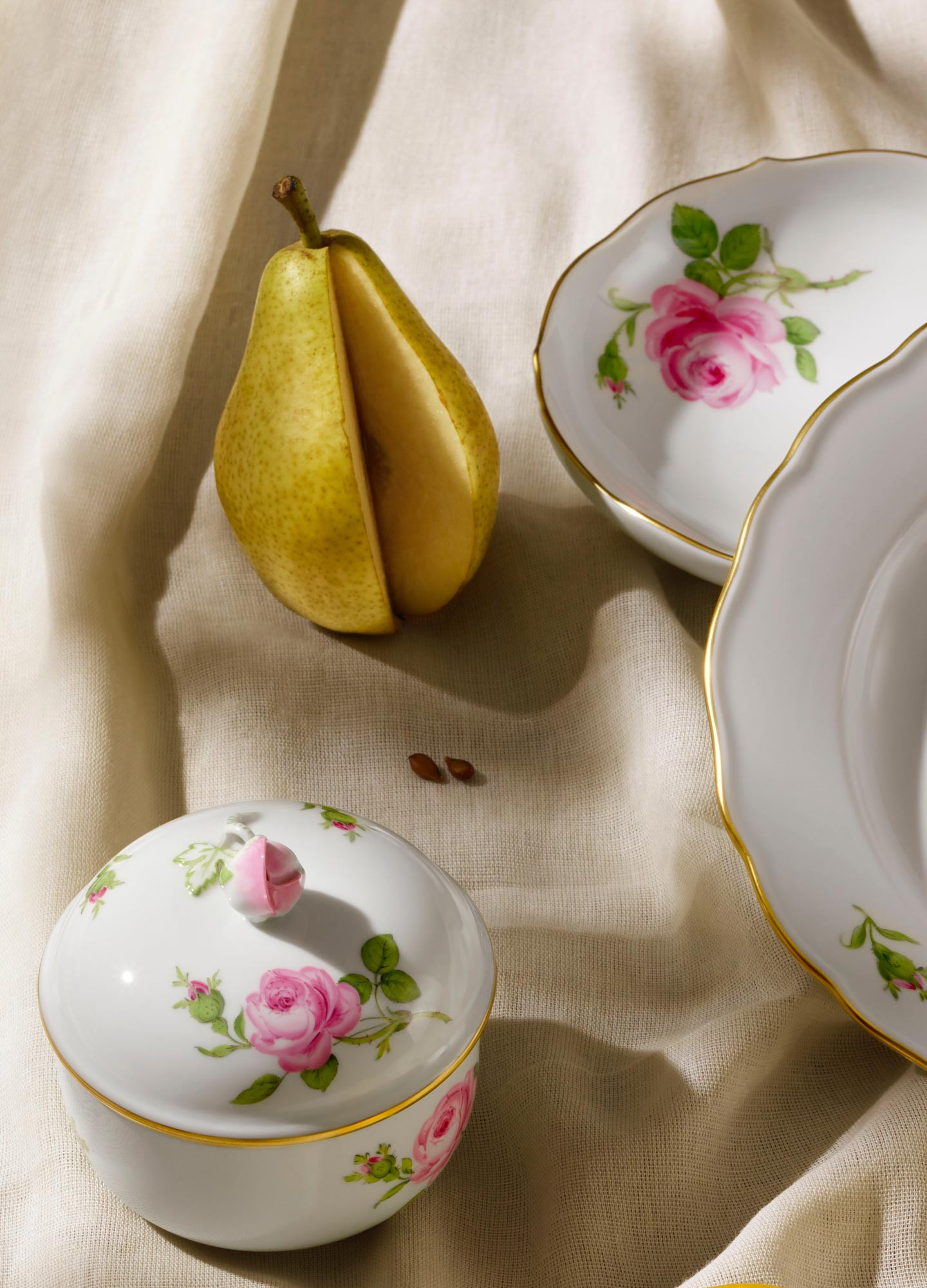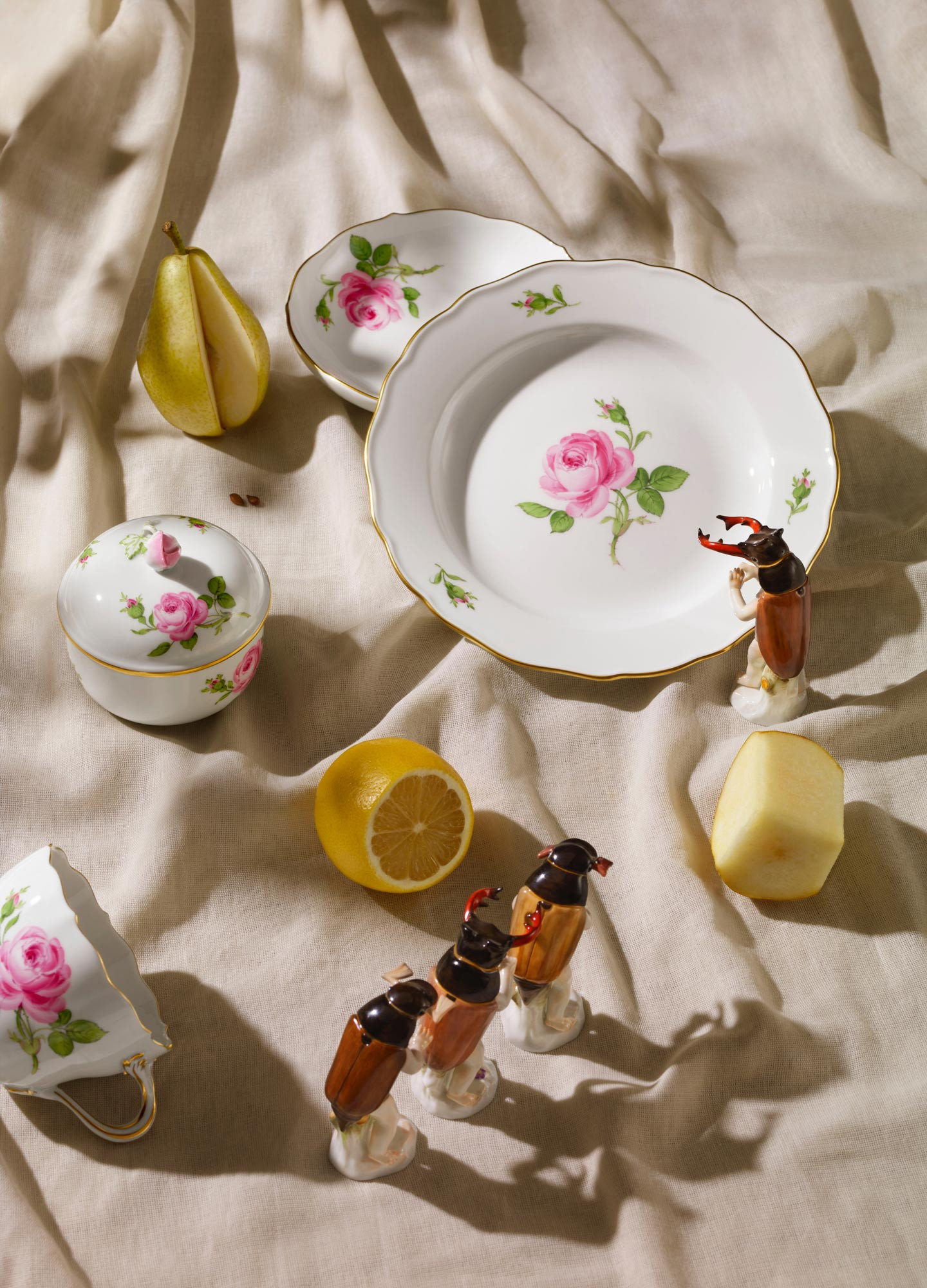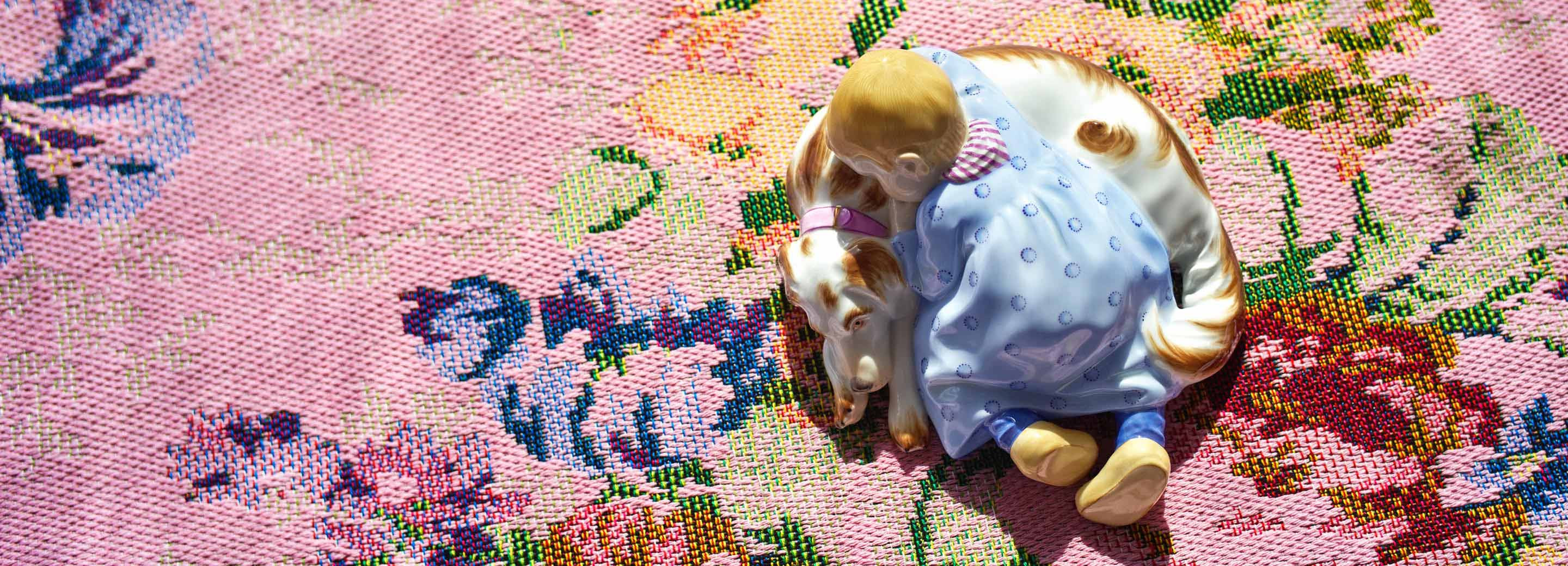Our gift for you: Save up to €50 on your Christmas shopping with the codes: XMAS10/ XMAS30/ XMAS50!


MEISSEN Rose

Floral painting on porcelain has a long tradition at the Meissen manufactory that has grown continually throughout the ages and continues on to this day. Much like other decorative motifs, the depiction of blossoming plants on porcelain dates back to the 1730s and was originally influenced by Eastern Asian porcelain art. Magnificent botanical illustrations would later serve as templates for the flowers depicted on the earliest examples of European porcelain. The rigid structure and formal nature taken over from these botanical illustrations began to be known as “German Flowers”. The “MEISSEN Rose” is one example of the style that evolved from the German flower painting of the 1740s that is more closely based on its natural namesake.
Floral decorations make up their own genre within porcelain painting. Specialisation is possible only after many years of experience. Even though the design and arrangement are predetermined, the flower painter still works freehand. After just lightly sketching out the shape of the flowers in pencil on the piece in question, the images are applied by hand directly on the porcelain all the way down to the finest details of the petals and leaves.
-
 HistoryBased on the still life paintings of the Old Masters, roses began to appear as a motif in porcelain painting in 1740. Initially in bouquet form, the rose became popular as a single motif in the following Marcolini period. Count Camillo Marcolini was not only the director of the manufactory for more than four decades, but also lends his name to a group of Neoclassical flower paintings. The graceful “MEISSEN Rose” was developed from these paintings in the Biedermeier period. The design corresponds to the particularly evocative still life paintings of flowers in the style of Georg Friedrich Kersting. The Dresden painter and contemporary of Caspar David Friedrichs’, was a drawing teacher and the head of flower painting at MEISSEN at this time. Although he shaped the style from this period in his role as head of the painting departments, there are no designs that have been proven to be solely created by the artist himself.
HistoryBased on the still life paintings of the Old Masters, roses began to appear as a motif in porcelain painting in 1740. Initially in bouquet form, the rose became popular as a single motif in the following Marcolini period. Count Camillo Marcolini was not only the director of the manufactory for more than four decades, but also lends his name to a group of Neoclassical flower paintings. The graceful “MEISSEN Rose” was developed from these paintings in the Biedermeier period. The design corresponds to the particularly evocative still life paintings of flowers in the style of Georg Friedrich Kersting. The Dresden painter and contemporary of Caspar David Friedrichs’, was a drawing teacher and the head of flower painting at MEISSEN at this time. Although he shaped the style from this period in his role as head of the painting departments, there are no designs that have been proven to be solely created by the artist himself.
“The pink and white roses gracefully intertwine on the porcelain. With its slightly opened petals, the ‘MEISSEN Rose’ exudes a classic elegance that is rivalled only by few designs.”
-
 CraftsmanshipFlower painting is an area of specialisation in porcelain painting that demands extreme precision, a talent for abstraction, and decades of experience on the part of the painters. Although the design and arrangement are predetermined, Meissen’s floral designs are painted freehand, making each piece unique. During the composition of the “MEISSEN Rose”, the painter must work with a great deal of foresight. The artist only has a rather dull brown at his disposal for the main elements of the image. He can influence both the later appearance and the intensity of the flower’s colour by applying more or less paint in this stage. In a final third firing, a transformation takes place and the rose blossoms in its radiant colouring.
CraftsmanshipFlower painting is an area of specialisation in porcelain painting that demands extreme precision, a talent for abstraction, and decades of experience on the part of the painters. Although the design and arrangement are predetermined, Meissen’s floral designs are painted freehand, making each piece unique. During the composition of the “MEISSEN Rose”, the painter must work with a great deal of foresight. The artist only has a rather dull brown at his disposal for the main elements of the image. He can influence both the later appearance and the intensity of the flower’s colour by applying more or less paint in this stage. In a final third firing, a transformation takes place and the rose blossoms in its radiant colouring.






